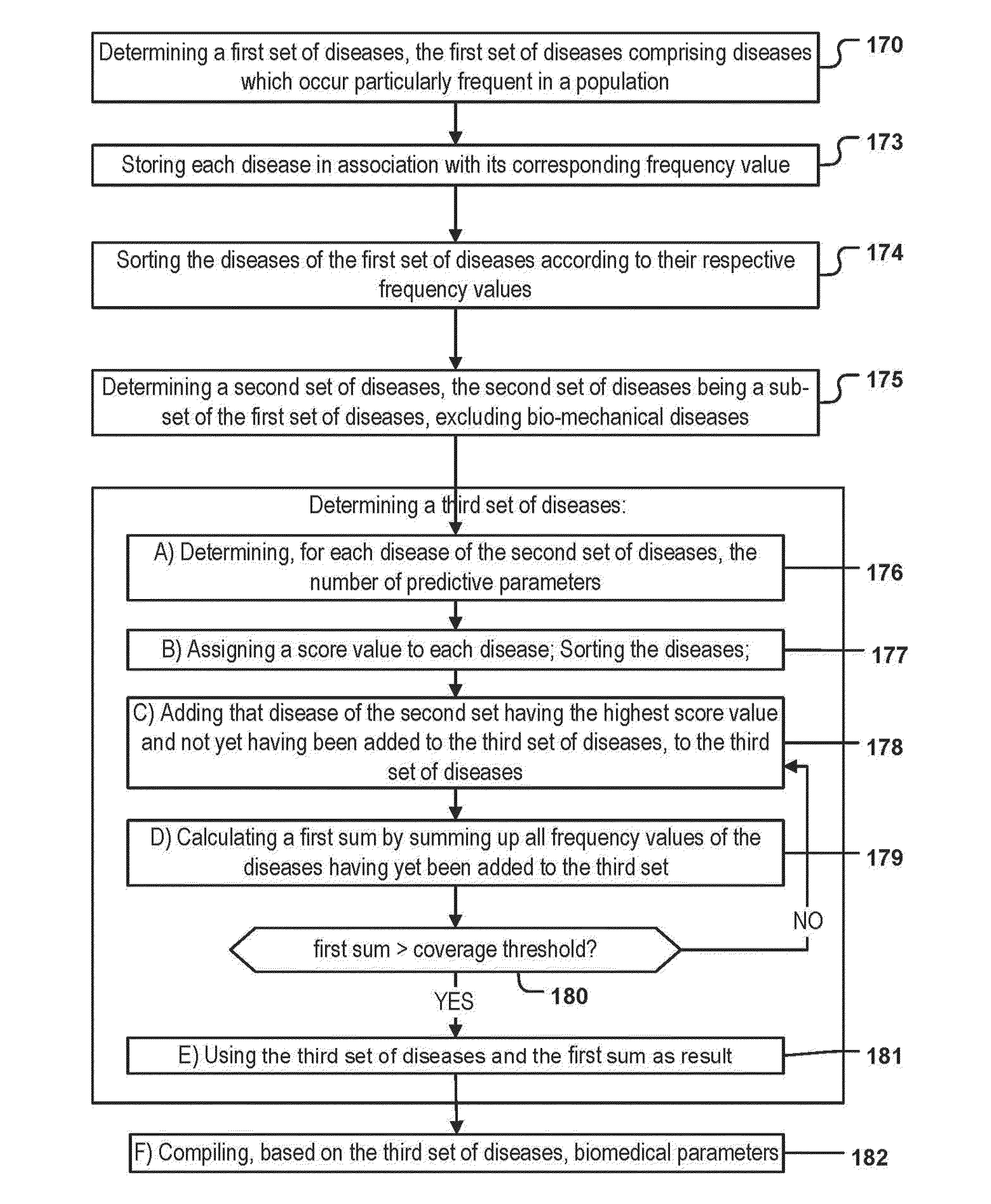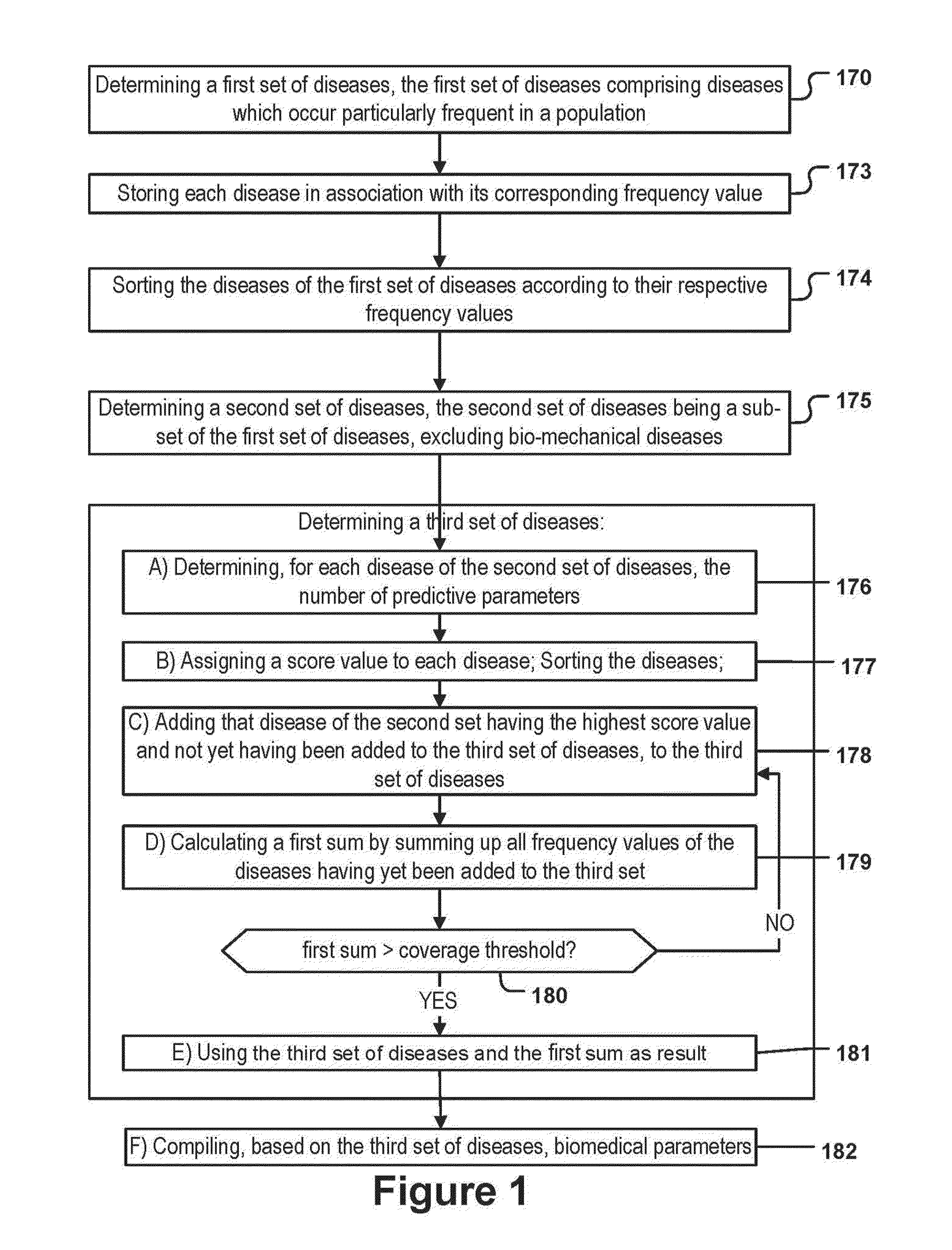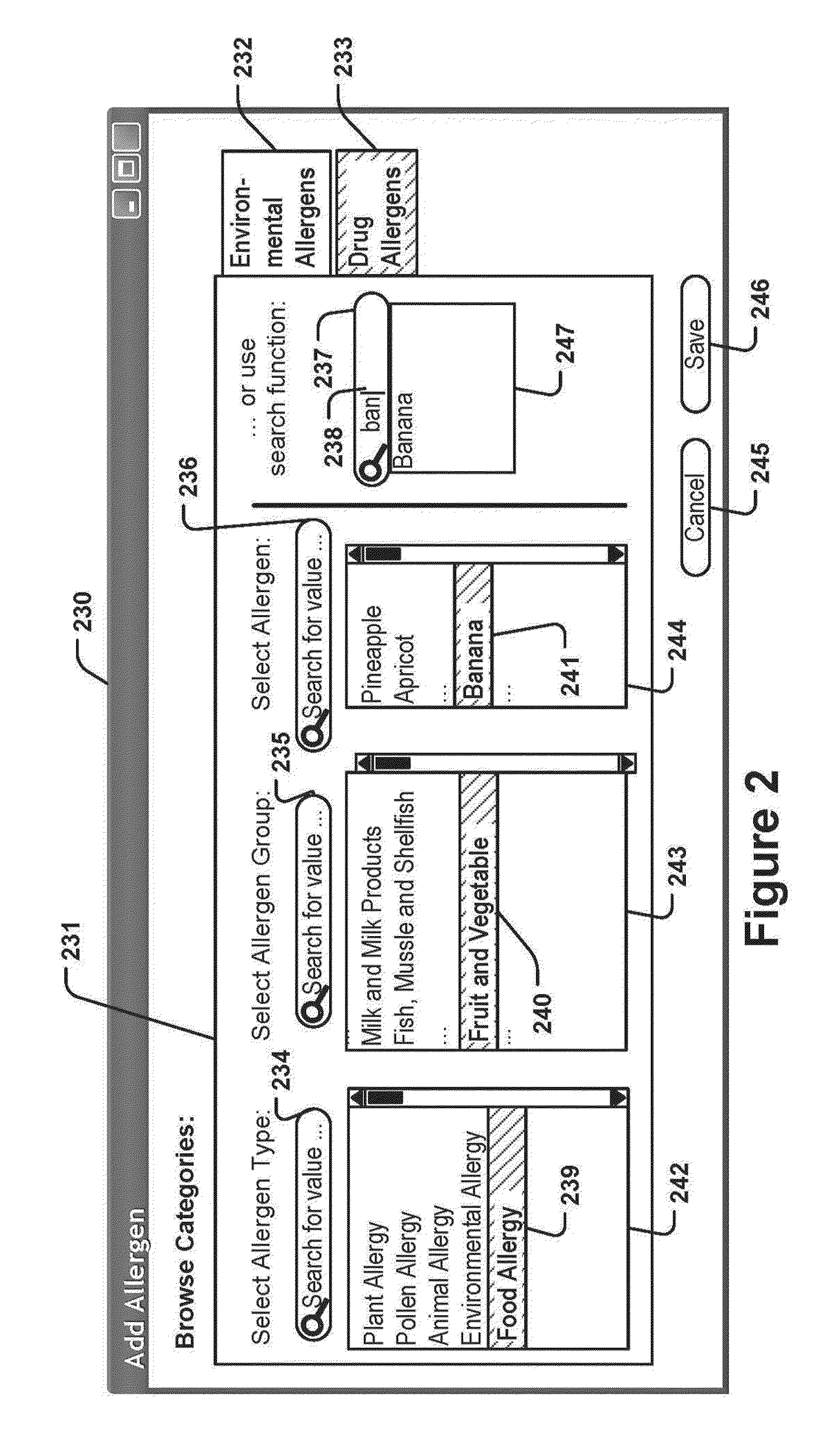Data structure, method, and system for predicting medical conditions
a data structure and medical condition technology, applied in the field of data processing, can solve the problems of inability to obtain this data, hampered medical dsss with a more general scope, and inconvenient use, so as to reduce computational costs and data storage space, and reduce the effect of time-consuming and labor-intensive delays
- Summary
- Abstract
- Description
- Claims
- Application Information
AI Technical Summary
Benefits of technology
Problems solved by technology
Method used
Image
Examples
Embodiment Construction
[0223]FIG. 1 depicts a flowchart of a method for specifying a data structure. In step 170 a first set of diseases is determined. The first set of diseases comprises diseases whose frequencies exceed a first threshold value. The first set of diseases is determined for a particular population of persons. The population of persons can be, for example, the population of a country, of a continent, of a set of countries such as industrialized nations or the like. The frequency of the disease can be determined in absolute numbers or in relative frequencies. For example, the number of doctor visits per year in said population of persons which are caused by a particular disease can be used as an ‘absolute’ frequency value.
[0224]According to some embodiments said absolute frequency value has to be transformed into a relative frequency value for each disease. In case it is determined that an absolute frequency value was provided, this can be achieved by dividing the absolute frequency value of...
PUM
 Login to View More
Login to View More Abstract
Description
Claims
Application Information
 Login to View More
Login to View More - R&D
- Intellectual Property
- Life Sciences
- Materials
- Tech Scout
- Unparalleled Data Quality
- Higher Quality Content
- 60% Fewer Hallucinations
Browse by: Latest US Patents, China's latest patents, Technical Efficacy Thesaurus, Application Domain, Technology Topic, Popular Technical Reports.
© 2025 PatSnap. All rights reserved.Legal|Privacy policy|Modern Slavery Act Transparency Statement|Sitemap|About US| Contact US: help@patsnap.com



